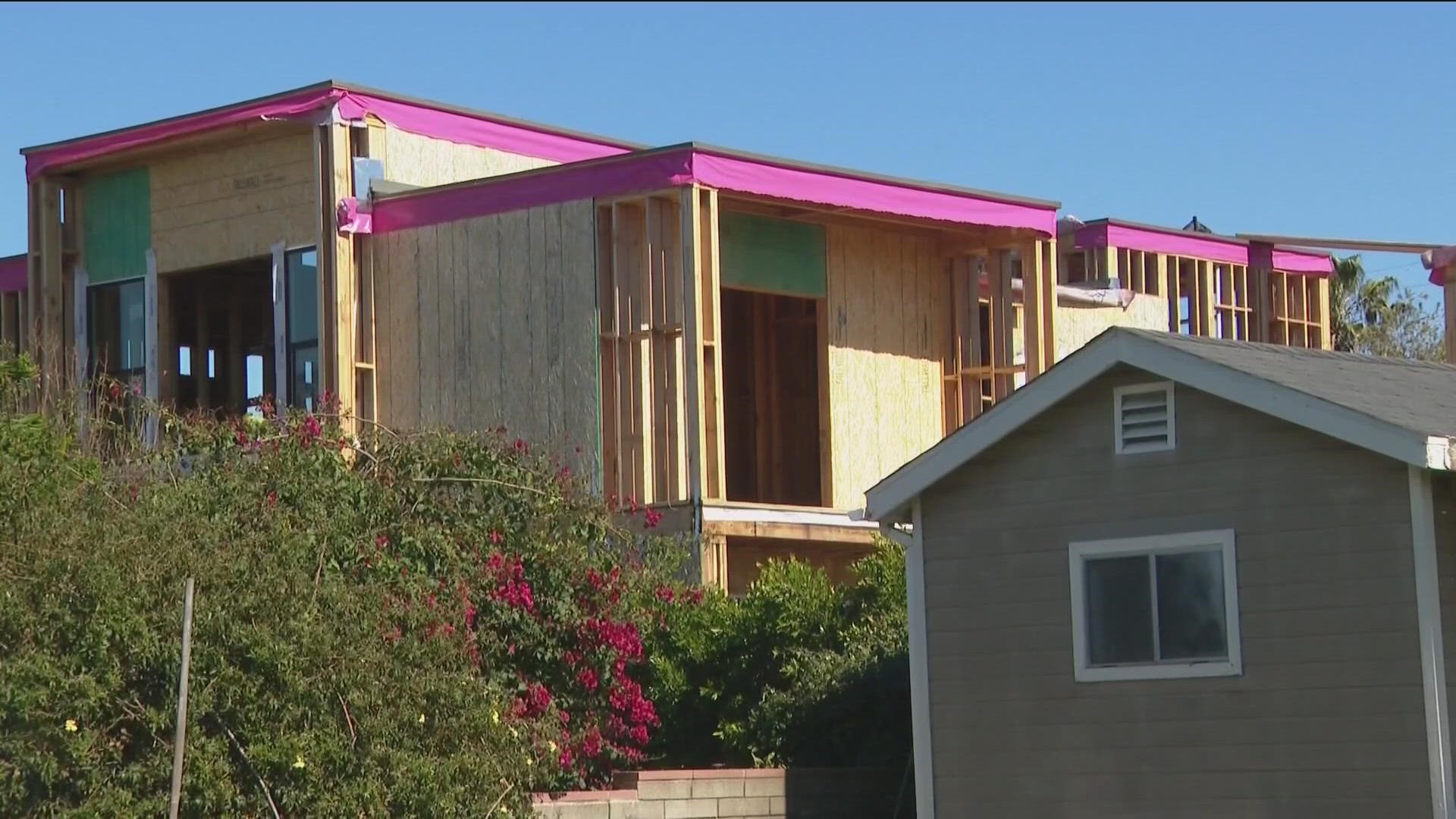SAN DIEGO — Wide-ranging updates to the city's development regulations were approved by a 5-4 vote by the San Diego City Council Tuesday, including changing the boundaries for certain home construction incentive programs.
This move is intended to increase the amount of developable land near major public transit stops.
"The new definition of Sustainable Development Area aligns development with the city's Climate Action Plan goals to expand housing near transit so more people can bike, walk, roll or take transit to their work, home, shopping and other places of enjoyment within their community," said Planning Director Heidi Vonblum.
"At the same time, it furthers fair and affordable housing opportunities in our city that desperately needs it."
In these new Sustainable Development Areas, housing density incentives like the City's ADU Bonus Program and Complete Communities Program would be allowed in neighborhoods further away from transit than what's currently allowed. One homeowner told CBS 8, “It's ridiculously frustrating that they allow this to happen."
He is unhappy about the multiple two-story granny flats towering over his backyard fence.
“It’s three of these buildings, the same one on each neighbor’s fence, overlooking the neighbor’s yard, just like this is overlooking mine,” said Rosenzweig while pointing at the accessory dwelling units being constructed behind his property. “They get to build this with no regard for parking, no developmental impact fees, no planning for infrastructure.”
Because his College East neighborhood sits within a Transit Priority Area (TPA), which means it’s within a half-mile of a trolley or bus stop, homeowners and developers can utilize the City’s ADU Density Bonus Program to build more granny flats on their properties. Currently, the half-mile distance from transit in a TPA is measured as the crow flies. For the new SDAs, the City is attempting to change how the distance from transit is measured to be actual walking distance instead. SDAs would also expand eligibility up to a mile from transit for some of the City’s density and affordable housing bonus programs.
“There are certain properties just barely over a half-mile away from a high-performing bus stop, and they currently don’t qualify,” said Colin Parent, Executive Director of Circulate San Diego. “With these updated changes, they will qualify.”
Parent said to address the housing crisis, a bunch of different solutions are needed, and these new SDAs are part of the big picture.
“We have a housing shortage, and we have to do everything we can to make it easier, cheaper, and faster to build more homes,” said Parent.
“They added 5,000 more acres of single-family zones into the SDA, and that equates to well over 86,000 homes,” said Geoff Hueter, Chair of Neighbors for a Better San Diego. “This disproportionately affects single-family homeowners; yes, they have interests too.”
Hueter doesn’t think increasing density further away from transit than the current TPAs makes much sense.
“When you put people further away from the bus stop, what’s going to happen is you’re just reproducing cars,” said Hueter.
But others disagree.
“Many people get to transit, not by walking, but by riding a bike or a scooter or being dropped off,” said Parent. “These policies will help improve and address climate change by allowing more people to live near and work near public transit.”
The San Diego City Council will vote on the proposed SDA as part of a land development code update at their Tuesday meeting at 2:00 p.m. Item 330 on the agenda.
WATCH RELATED: Debate brewing over San Diego’s proposed ‘Sustainable Development Areas’

